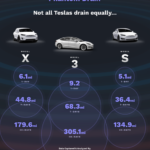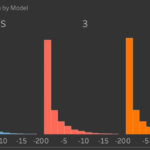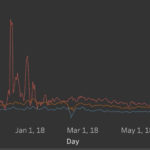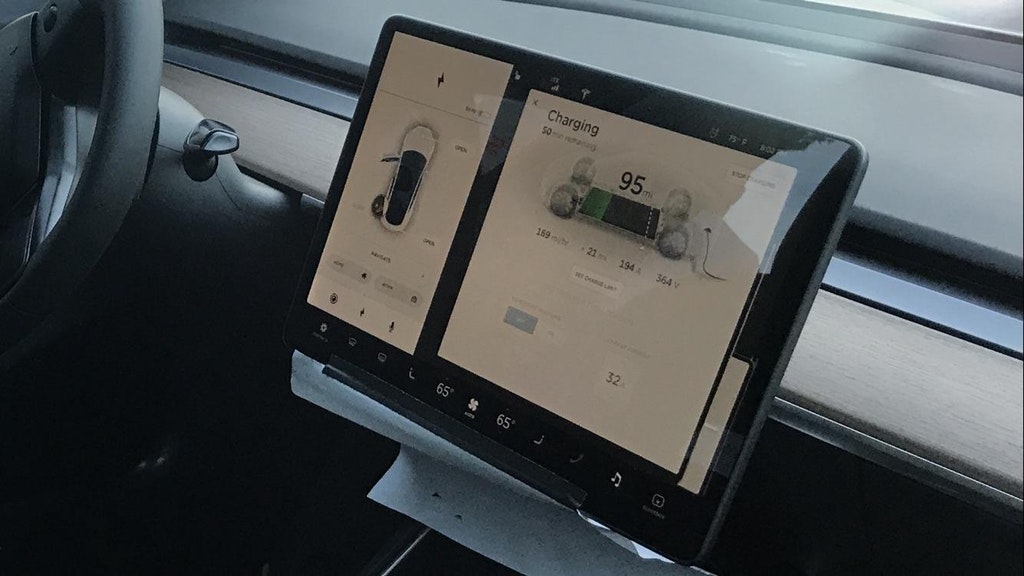
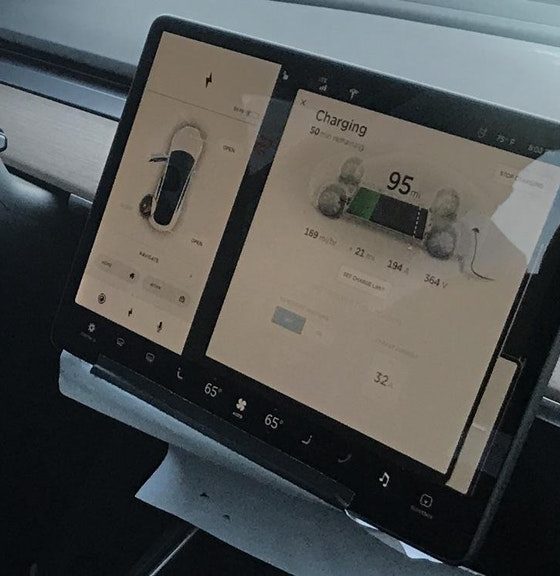
News
Tesla Model 3 “Phantom Drain” compared to Model S and Model X
Tesla Model 3 currently leads the pack in terms of having the highest parasitic battery drain, or better known as “Phantom Drain”, over Tesla’s more mature Model S and Model X.
Phantom Drain represents the amount of charge an electric vehicle loses when it is not being driven or operated by a person, similar to how smartphones lose battery power while in standby mode. In the case of Tesla vehicles, the battery discharges while the car is not being driven in order to provide power to its onboard electronics and auxiliary functions, such as the battery’s thermal management system. According to the Model 3 Owners Guide, the vehicle, on average, should discharge at a rate of around 1% per day, similar to Tesla’s quotes for the Model S and Model X’s battery drain levels.
However, looking at data collected through TezLab, a popular app among the Tesla owners community that tracks vehicle power usage, efficiency, and other statistics, Ben Sullins of the Teslanomics YouTube channel was able to see a significantly larger discharge rate from the Model 3. Ben was also able to compare the differences in vampire drain between the 3,855 Model S, 1,281 Model X, and 362 Model 3 being sampled.
Looking at the distribution of Phantom Drain between the Model S, Model 3 and Model X, it could be seen that around 60% of TezLab’s users experienced drain levels similar to Tesla’s quoted levels, which are on the 1-2% range per day. However, the differences between battery drain of the Model 3 and the Model S and X become more prominent over time. It’s worth noting that any parasitic losses as a result of TezLab connecting to the vehicle on a recurring basis may also be accounted for in the results being reported.
- Phantom Drain Info Graphic comparing Model S, Model 3, Model X [Credit: TezLab]
- A comparison of the Phantom Drain levels of the Model 3, Model S, and Model X. [Credit: Ben Sullins/YouTube]
- A comparison of the Phantom Drain levels of the Model 3, Model S, and Model X. [Credit: Ben Sullins/YouTube]
As noted by Ben, the Model 3’s Phantom Drain levels exhibited volatility sometime during the November 2017 to January 2018 period. Ben’s recent real-world range test using his RWD Long Range Model 3 on an LA to Las Vegas route showed an even more drastic level of Phantom Drain, with his car losing almost 20 miles of range while he and his companion ate lunch. That’s a loss of more than 6% from the Model 3’s rated 310-mile range in the span of an hour.
The drain levels of Model 3 owners using the TezLab app has started becoming more normalized, suggesting that the longer the vehicles are on the road, and as Tesla pushed firmware updates to its Model 3 fleet, the more consistent the cars’ drain levels became. Back in 2015, we covered a Model S that lost an average of 2.3% rated range per day while the vehicle was left in 16-degree Fahrenheit (-9 C) weather.
Overall, Tezlab’s data shows that the Model 3 is becoming more consistent as the maturity of the vehicle’s software is improving. Other features like its battery thermal management systems and its auxiliary functions are improving over time as well. These improvements are a trademark of Tesla, which is known as one of the only carmakers whose vehicles get better after they roll off the showrooms.
Watch Ben’s video on the Phantom Drain of the Model 3 compared to the Model S and Model X.

Elon Musk
Elon Musk confirms xAI’s purchase of five 380 MW natural gas turbines
The deal, which was confirmed by Musk on X, highlights xAI’s effort to aggressively scale its operations.

xAI, Elon Musk’s artificial intelligence startup, has purchased five additional 380 MW natural gas turbines from South Korea’s Doosan Enerbility to power its growing supercomputer clusters.
The deal, which was confirmed by Musk on X, highlights xAI’s effort to aggressively scale its operations.
xAI’s turbine deal details
News of xAI’s new turbines was shared on social media platform X, with user @SemiAnalysis_ stating that the turbines were produced by South Korea’s Doosan Enerbility. As noted in an Asian Business Daily report, Doosan Enerbility announced last October that it signed a contract to supply two 380 MW gas turbines for a major U.S. tech company. Doosan later noted in December that it secured an order for three more 380 MW gas turbines.
As per the X user, the gas turbines would power an additional 600,000+ GB200 NVL72 equivalent size cluster. This should make xAI’s facilities among the largest in the world. In a reply, Elon Musk confirmed that xAI did purchase the turbines. “True,” Musk wrote in a post on X.
xAI’s ambitions
Recent reports have indicated that xAI closed an upsized $20 billion Series E funding round, exceeding the initial $15 billion target to fuel rapid infrastructure scaling and AI product development. The funding, as per the AI startup, “will accelerate our world-leading infrastructure buildout, enable the rapid development and deployment of transformative AI products.”
The company also teased the rollout of its upcoming frontier AI model. “Looking ahead, Grok 5 is currently in training, and we are focused on launching innovative new consumer and enterprise products that harness the power of Grok, Colossus, and 𝕏 to transform how we live, work, and play,” xAI wrote in a post on its website.
Elon Musk
Elon Musk’s xAI closes upsized $20B Series E funding round
xAI announced the investment round in a post on its official website.

xAI has closed an upsized $20 billion Series E funding round, exceeding the initial $15 billion target to fuel rapid infrastructure scaling and AI product development.
xAI announced the investment round in a post on its official website.
A $20 billion Series E round
As noted by the artificial intelligence startup in its post, the Series E funding round attracted a diverse group of investors, including Valor Equity Partners, Stepstone Group, Fidelity Management & Research Company, Qatar Investment Authority, MGX, and Baron Capital Group, among others.
Strategic partners NVIDIA and Cisco Investments also continued support for building the world’s largest GPU clusters.
As xAI stated, “This financing will accelerate our world-leading infrastructure buildout, enable the rapid development and deployment of transformative AI products reaching billions of users, and fuel groundbreaking research advancing xAI’s core mission: Understanding the Universe.”
xAI’s core mission
Th Series E funding builds on xAI’s previous rounds, powering Grok advancements and massive compute expansions like the Memphis supercluster. The upsized demand reflects growing recognition of xAI’s potential in frontier AI.
xAI also highlighted several of its breakthroughs in 2025, from the buildout of Colossus I and II, which ended with over 1 million H100 GPU equivalents, and the rollout of the Grok 4 Series, Grok Voice, and Grok Imagine, among others. The company also confirmed that work is already underway to train the flagship large language model’s next iteration, Grok 5.
“Looking ahead, Grok 5 is currently in training, and we are focused on launching innovative new consumer and enterprise products that harness the power of Grok, Colossus, and 𝕏 to transform how we live, work, and play,” xAI wrote.
Investor's Corner
Tesla gets price target bump, citing growing lead in self-driving

Tesla (NASDAQ: TSLA) stock received a price target update from Pierre Ferragu of Wall Street firm New Street Research, citing the company’s growing lead in self-driving and autonomy.
On Tuesday, Ferragu bumped his price target from $520 to $600, stating that the consensus from the Consumer Electronics Show in Las Vegas was that Tesla’s lead in autonomy has been sustained, is growing, and sits at a multiple-year lead over its competitors.
CES 2026 validates Tesla’s FSD strategy, but there’s a big lag for rivals: analyst
“The signal from Vegas is loud and clear,” the analyst writes. “The industry isn’t catching up to Tesla; it is actively validating Tesla’s strategy…just with a 12-year lag.”
The note shows that the company’s prowess in vehicle autonomy is being solidified by lagging competitors that claim to have the best method. The only problem is that Tesla’s Vision-based approach, which it adopted back in 2022 with the Model 3 and Model Y initially, has been proven to be more effective than competitors’ approach, which utilizes other technology, such as LiDAR and sensors.
Currently, Tesla shares are sitting at around $433, as the company’s stock price closed at $432.96 on Tuesday afternoon.
Ferragu’s consensus on Tesla shares echoes that of other Wall Street analysts who are bullish on the company’s stock and position within the AI, autonomy, and robotics sector.
Dan Ives of Wedbush wrote in a note in mid-December that he anticipates Tesla having a massive 2026, and could reach a $3 trillion valuation this year, especially with the “AI chapter” taking hold of the narrative at the company.
Ives also said that the big step in the right direction for Tesla will be initiating production of the Cybercab, as well as expanding on the Robotaxi program through the next 12 months:
“…as full-scale volume production begins with the autonomous and robotics roadmap…The company has started to test the all-important Cybercab in Austin over the past few weeks, which is an incremental step towards launching in 2026 with important volume production of Cybercabs starting in April/May, which remains the golden goose in unlocking TSLA’s AI valuation.”
Tesla analyst breaks down delivery report: ‘A step in the right direction’
Tesla has transitioned from an automaker to a full-fledged AI company, and its Robotaxi and Cybercab programs, fueled by the Full Self-Driving suite, are leading the charge moving forward. In 2026, there are major goals the company has outlined. The first is removing Safety Drivers from vehicles in Austin, Texas, one of the areas where it operates a ride-hailing service within the U.S.
Ultimately, Tesla will aim to launch a Level 5 autonomy suite to the public in the coming years.
